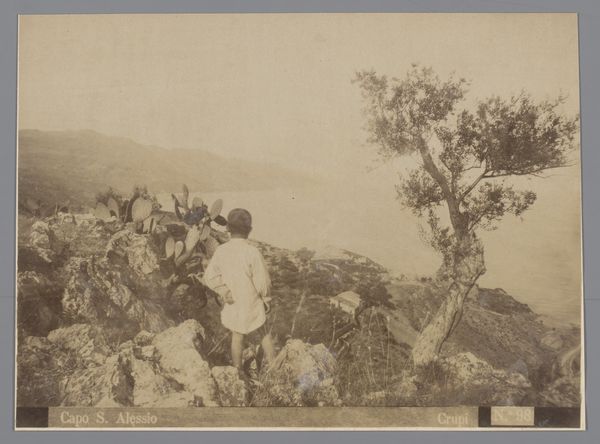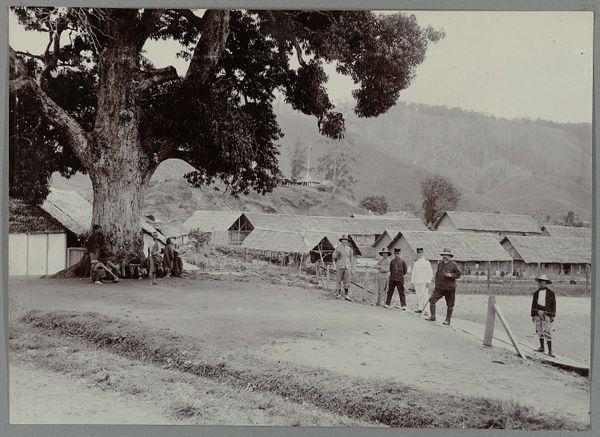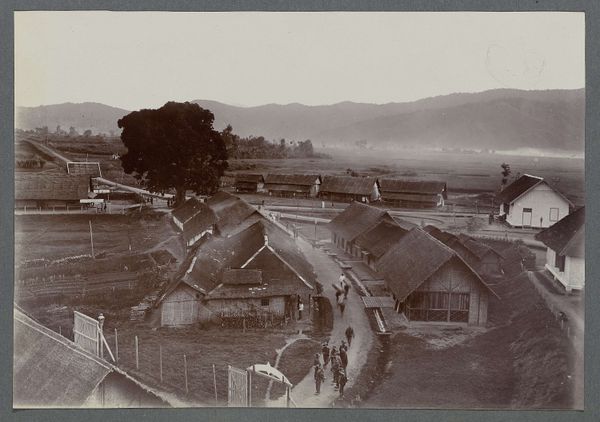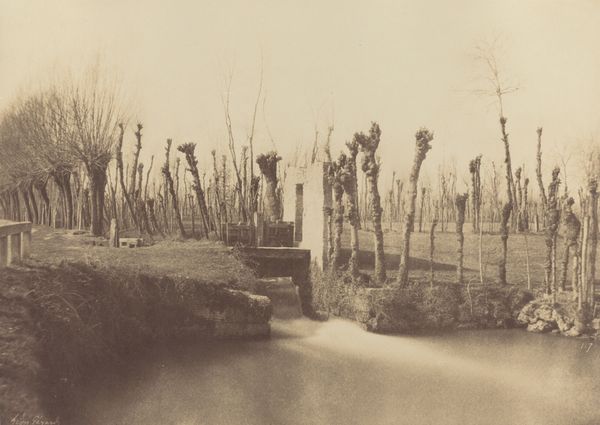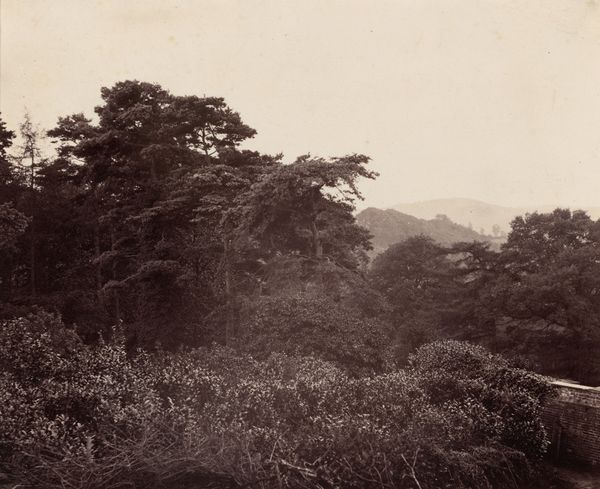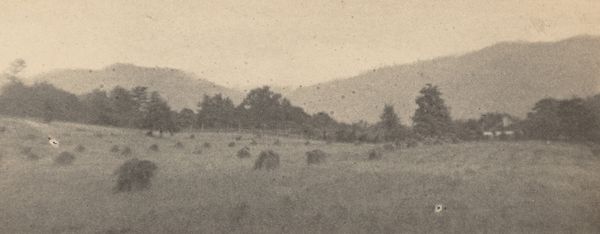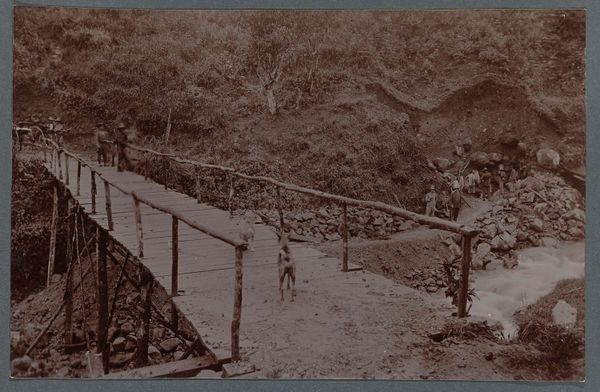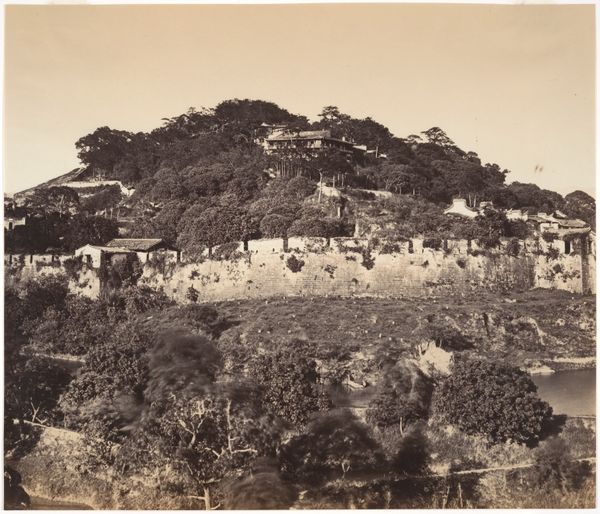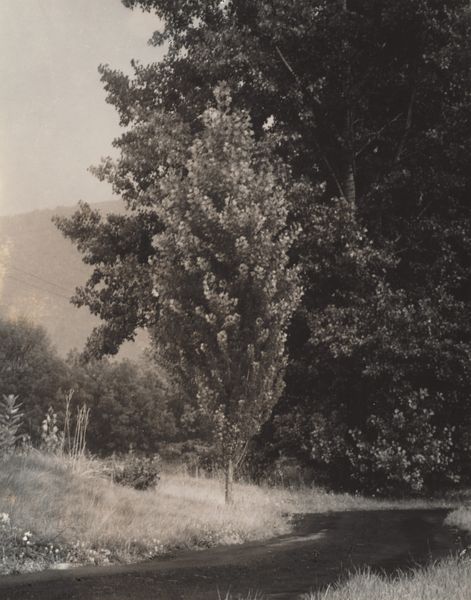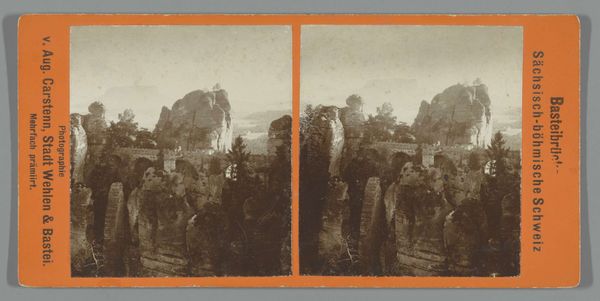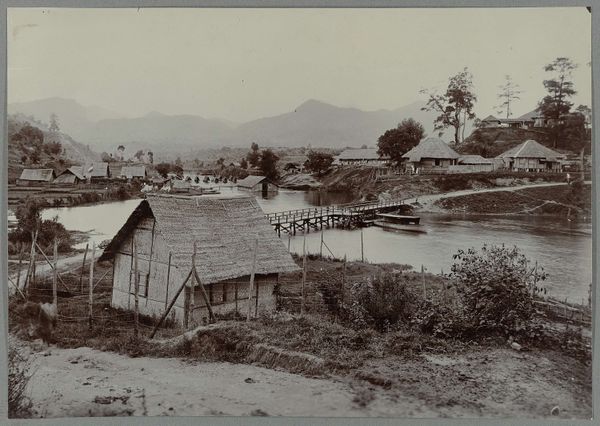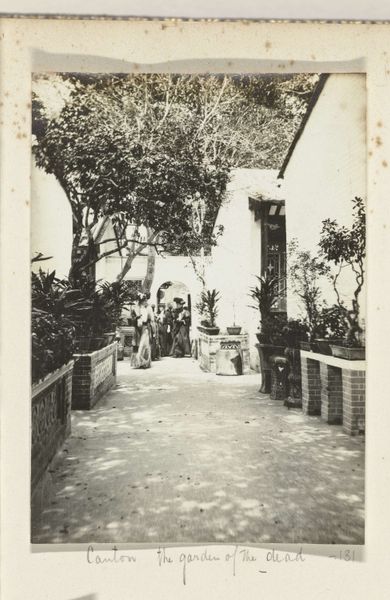
photography, gelatin-silver-print
#
16_19th-century
#
old world
#
landscape
#
photography
#
gelatin-silver-print
#
monochrome photography
#
19th century
#
realism
Dimensions: image: 20.3 x 28.3 cm (8 x 11 1/8 in.) mount: 31.2 x 41 cm (12 5/16 x 16 1/8 in.)
Copyright: National Gallery of Art: CC0 1.0
Editor: We’re looking at “Agricultural Scene with Mountains,” a gelatin-silver print from the 1850s by Louis Crette. The sepia tones give it a very classic, almost timeless feel, but I find the image itself rather quiet. What do you see in this photograph? Curator: The stillness you observe resonates deeply. Beyond the depicted agricultural practices, I'm drawn to the almost archetypal symbolism at play. The mountain backdrop, constant and enduring, provides a striking contrast to the cultivated, mutable land. Notice the drying racks laden with what appears to be crops. Editor: Yes, the racks are prominent. Is it the mountain behind and the hanging foliage in the front— the balance, or rather the imbalance between those that is important? Curator: Indeed, that imbalance speaks volumes. The mountains, often viewed as symbols of permanence, spiritual aspiration, or obstacles, represent one extreme. Then, these drying crops, bound by human intention yet vulnerable to decay. One element hints at grand natural forces, the other to everyday work. Think of how photography itself, newly available in that moment, documented the changes of the landscape with incredible clarity and scale. Editor: So you are saying it creates a kind of tension? Between what we can and can’t change, between humanity and nature? Curator: Precisely. What emotional weight do you see those details carrying now? How does seeing those visual motifs together provoke thoughts about larger cultural themes? Editor: Now I see this isn't just a photograph of a scene, it's a meditation on our relationship with the land! It's like a time capsule of how people saw themselves in relation to nature back then. Curator: A fine way of looking at how the landscape's iconography shapes how we understand its memory. Thank you for sharing your insights!
Comments
No comments
Be the first to comment and join the conversation on the ultimate creative platform.
